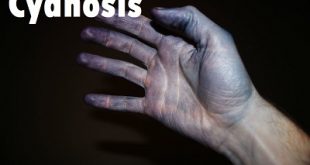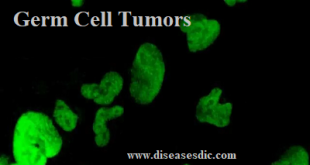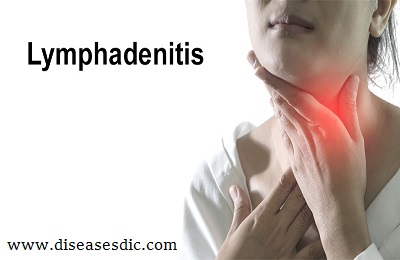Description
Fifth disease is a mild viral infection caused by human parvovirus B19. It’s more common in children than adults. It’s called fifth disease because it was fifth on a list of illnesses that caused rashes in children in the past. Fifth disease is sometimes called “slapped cheek disease.” The illness’s bright red rash on the face looks like the child has been slapped. About half of people get fifth disease sometime during childhood or their teens. Once you’ve had it, you are unlikely to be at risk of getting it again.
Transmission
Parvovirus B19—which causes fifth disease—spreads through respiratory secretions, such as saliva, sputum, or nasal mucus, when an infected person coughs or sneezes. You are most contagious when it seems like you have “just a fever and/or cold” and before you get the rash or joint pain and swelling. After you get the rash you are not likely to be contagious, so it is usually safe for you or your child to go back to work or school.
People with fifth disease who have weakened immune systems may be contagious for a longer amount of time.
Parvovirus B19 can also spread through blood or blood products. A pregnant woman who is infected with parvovirus B19 can pass the virus to her baby.
Once you recover from fifth disease, you develop immunity that generally protects you from parvovirus B19 infection in the future.
What is the pathophysiology of Fifth Disease?
Human PV-B19, a member of the family Parvoviridae, is a heat-stable, single-stranded DNA virus. It is the only parvovirus known to cause disease in humans.
The development of erythema infectiosum in children is a normal response to infection by PV-B19. Acute infection in a host who is immunocompetent leads to a Th-1–mediated cellular immune response, with the production of specific immunoglobulin M (IgM) antibodies and subsequent formation of immune complexes. Clinical signs and symptoms of erythema infectiosum probably result from the deposition of the immune complexes in the skin and joints of individuals with this condition and not from the circulating virus. The incubation period is usually 7-10 days, but it can be 4-21 days. Extremely high viral loads are noted in patients with aplastic crisis, but low-level persistent polymerase chain reaction positivity in tissues is also common among adults in a variety of tissues.
Causes of Fifth Disease
Fifth disease is caused by human parvovirus B19. It often affects preschoolers or school-age children during the spring. The disease spreads through the fluids in the nose and mouth when someone coughs or sneezes. About 20 percent of people who get the virus don’t have symptoms, but they can still pass the virus along to others.
Risk Factors
This problem is more common in children. Pregnant women and people with weakened immune systems are at high risk of severe illness.
Other things that may raise the risk are:
- Contact with an infected person
- Jobs that require close contact with infected people, such as healthcare workers and teachers
- Exposure to contaminated blood or blood products
Fifth Disease Symptoms
The most recognized symptom of fifth disease is a sudden, bright red rash across the cheeks that looks as if the child has been slapped. You might also hear it called slapped-cheek disease. The disease is rare in infants and adults.
The rash typically appears a week to 10 days after symptoms similar to those of the common cold, such as:
- Stuffy or runny nose
- Sore throat
- Mild fever
- Fatigue
- Headaches
- Muscle aches
- Joint pain (more common in adults)
What are the complications of Fifth Disease?
Most people recover completely from fifth disease without any long-lasting problems. Sometimes, complications can occur, including:
- Anemia: Sometimes the virus stops the body’s production of red blood cells, leading to anemia. This problem is temporary and usually not noticeable. However, anemia can be serious if you have a weakened immune system. You are most at risk for complications if you have sickle cell disease, cancer, human immunodeficiency virus (HIV) or have had an organ transplant.
- Arthritis: A small number of children (10%) and a larger number of adults (around 80%) temporarily develop painful joints and swelling. These symptoms typically improve in a couple of weeks. However, 10% of adults develop chronic parvovirus-associated arthritis, or polyarthritis. Women are more at risk than men.
How does Fifth Disease affect pregnancy?
The virus can infect unborn babies through their mother’s blood. The virus doesn’t cause birth defects or developmental problems. If you’re pregnant and have been exposed to someone with fifth disease, contact your healthcare provider immediately.
If you have fifth disease while you’re pregnant, the virus can very rarely lead to:
- Fetal anemia (low red blood cell count).
- Hydrops fetalis (fluid buildup around organs).
- Miscarriage (when pregnancy ends before the baby develops fully).
- Stillbirth (when a baby dies before birth).
However, most pregnant mothers who are infected with this virus deliver normal, healthy babies.
Diagnosis of Fifth Disease
Signs and symptoms of erythema infectiosum tend to be easy to detect, so diagnosis is normally straightforward. It is sometimes confused with scarlet fever, but the rash is different.
Tests to confirm the presence of the virus are not generally ordered.
Around 50 percent of all adults are immune to parvovirus infections, probably because they experienced infection during childhood, even if it went unnoticed.
Blood tests
Sometimes a doctor may recommend a blood test to check for antibodies.
This may happen if the patient:
- Is pregnant
- Has a compromised immune system, due, for example, to HIV or AIDS
- Has a chronic red blood cell disorder, such as sickle-cell anemia
Depending on the result, the following actions are possible:
Results show the patient is immune: no further action is required, as reinfection is not possible.
Results show a recent parvovirus infection: further tests may be ordered to find out whether any complications, for example, anemia, require treatment.
Results show a pregnant woman is infected: additional tests, including an ultrasound scan and further blood tests, will monitor the developing fetus for complications.
Treatment of Fifth Disease
In most cases, no treatment is required, but medications can help reduce symptoms.
The rash: treatment is not usually necessary.
Pruritis: antihistamines may help if there is severe itching of the skin.
Headache, fevers, and cold-like symptoms: the doctor may suggest Tylenol (paracetamol) or ibuprofen. Younger children can take painkillers in liquid form. It is important to check dosages and frequency of use with a qualified pharmacist, a doctor, or by reading the public information leaflet (PIL) in the package.
Joint pains and swelling: the doctor may advise rest and prescribe an anti-inflammatory drug, such as ibuprofen. In most cases, there are no long-term consequences, and the pain resolves within a few days or weeks.
Drink and rest: drinking plenty of fluids, especially water, and getting enough rest can ease symptoms and speed up recovery.
Severe anemia: this may require hospitalization and a blood transfusion.
Weakened immune system: patients may be hospitalized and antibodies provided through a blood transfusion.
Pregnancy: the doctor will carefully monitor the fetus. If there are signs of anemia, CHF, or edema, blood transfusions may be given. This will reduce the risk of miscarriage.
Can Fifth Disease be prevented or avoided?
There is no vaccine for fifth disease. You can prevent your child from getting it by helping him or her practice good hygiene habits. These include:
- Washing hands often with soap and water.
- Covering the mouth and nose with their elbow when coughing or sneezing.
- Not touching the eyes, nose, or mouth.
- Avoiding close contact with anyone who is sick.
- Keeping them home when they are sick.
 Diseases Treatments Dictionary This is complete solution to read all diseases treatments Which covers Prevention, Causes, Symptoms, Medical Terms, Drugs, Prescription, Natural Remedies with cures and Treatments. Most of the common diseases were listed in names, split with categories.
Diseases Treatments Dictionary This is complete solution to read all diseases treatments Which covers Prevention, Causes, Symptoms, Medical Terms, Drugs, Prescription, Natural Remedies with cures and Treatments. Most of the common diseases were listed in names, split with categories.







